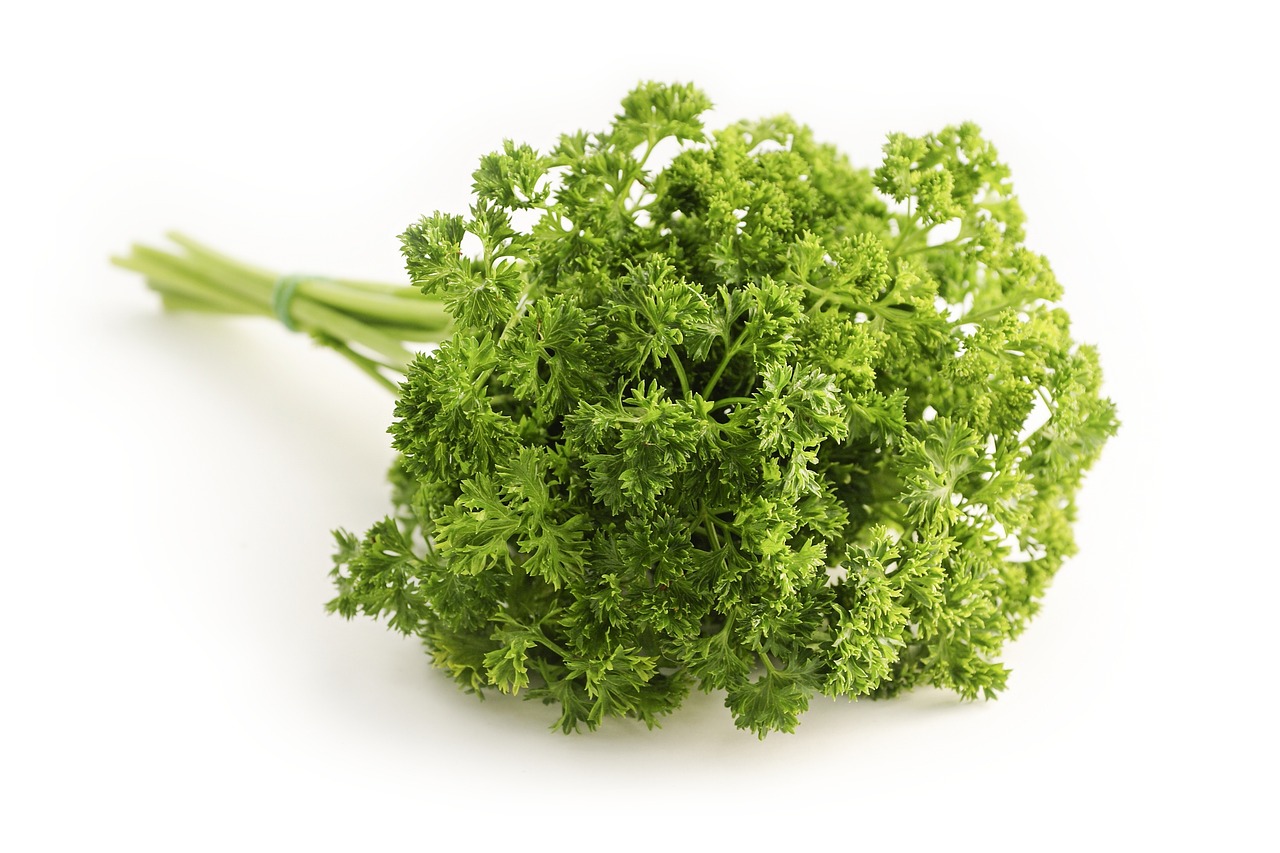Parsley, that humble little herb often found as a garnish on our plates, is so much more than just a pretty decoration. With its vibrant green leaves and fresh, earthy taste, parsley has a long history of enhancing dishes from various cuisines worldwide.
Whether using curly or flat-leaf varieties, this versatile herb can elevate your cooking to new heights, adding depth and flavor to everything from salads and soups to meat and fish dishes.
But did you know that parsley is a culinary superstar and a powerhouse of nutrients? That’s right – it’s packed with essential vitamins and minerals for maintaining good health. So, the next time you see that sprig of parsley on your plate, remember it’s not just there for looks. It’s a reminder that sometimes, the simplest ingredients can make the biggest impact on our cooking.
So, let’s dive into the fascinating world of parsley and explore its many uses in the kitchen, discovering how it can transform our meals and tantalize your taste buds.
Types Of Parsley
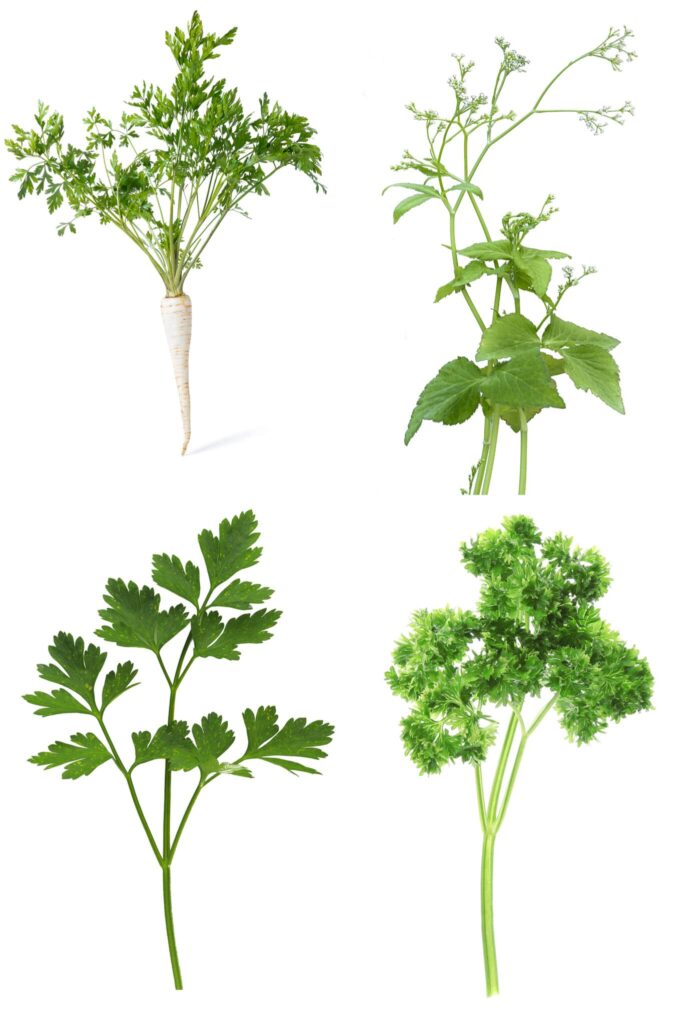
Did you know that several types of parsley are out there, each with unique characteristics and flavors? Let’s take a little journey together and explore some of the most popular varieties you might come across in your culinary adventures.
🪴 Flat Leaf
First up, we have the ever-popular Flat Leaf parsley, also known as Italian parsley. This variety is famous for its bright, slightly peppery taste and flat, dark green leaves. Flat Leaf Parsley is a favorite among chefs because it’s more flavorful than other varieties and holds up well during cooking.
🪴 Curly Leaf Parsley
As the name suggests, this type has curly, ruffled leaves that give it a beautiful, ornamental appearance. While its flavor is milder than Flat Leaf parsley, it still adds a lovely freshness to dishes.
🪴 Hamburg
Hamburg parsley, which is a bit of a hidden gem. This variety is unique because it’s grown not only for its leaves but also for its large, edible root – think of it as the love child of parsley and parsnips. Hamburg parsley has a somewhat earthier flavor and is used in European cuisine, especially in soups and stews where its root can really shine.
🪴 Japanese Parsley
This one is quite different, with a distinct, slightly bitter taste and a hint of celery. Its tender, delicate leaves and stems are commonly used in Japanese cuisine, adding a refreshing touch to dishes like miso soup, tempura, and sushi rolls.
Growing and Storing Parsley
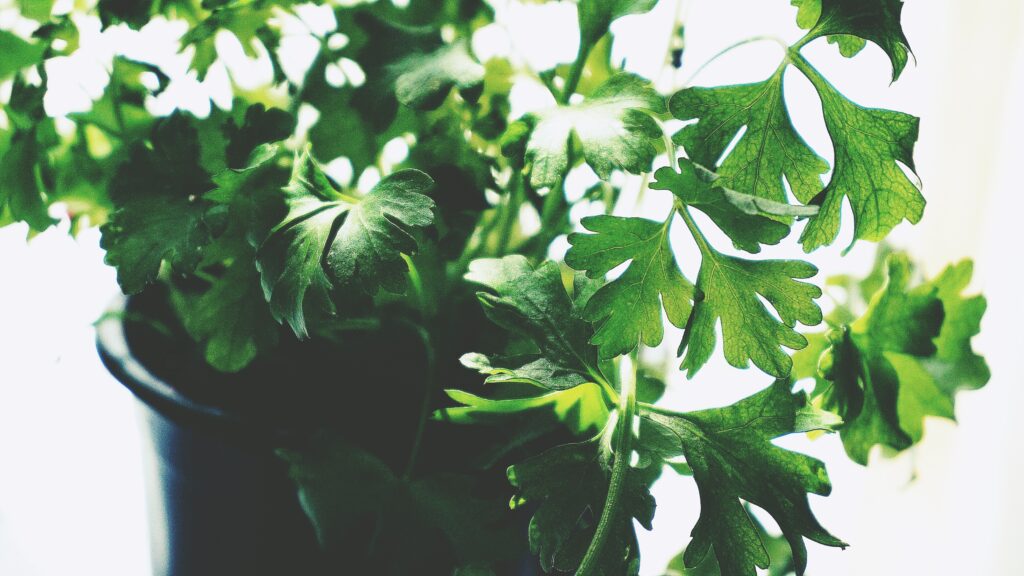
Parsley is a simple herb to grow and maintain, making it an excellent choice for novice gardeners. It enjoys full sun but can also tolerate shade
When harvesting your parsley, patience is key, as it may take up to 70 days for the plant to mature fully. To harvest, simply snip the outer stems close to the base, leaving the inner, younger stems to continue growing. This way, you’ll enjoy a continuous supply of fresh parsley throughout the season!
Now, let’s talk about storage. To keep your freshly picked parsley vibrant and crisp, trim the ends and place it in a glass of water, just like you would with a bouquet of flowers. Cover the leaves with a plastic bag and store it in the refrigerator. This method will keep your parsley fresh for up to two weeks.
If you have an abundant harvest and want to preserve your parsley for longer periods, drying and freezing are excellent options. To dry parsley, simply tie the stems together and hang them upside down in a well-ventilated area away from direct sunlight. The leaves should take about 1-2 weeks to completely dry and crisp.
Alternatively, you can freeze parsley by chopping the leaves and placing them in an ice cube tray. Fill the tray with water or olive oil and freeze until solid. Pop out the parsley cubes and store them in a freezer-safe container.
How Parsley Is Used In Cooking
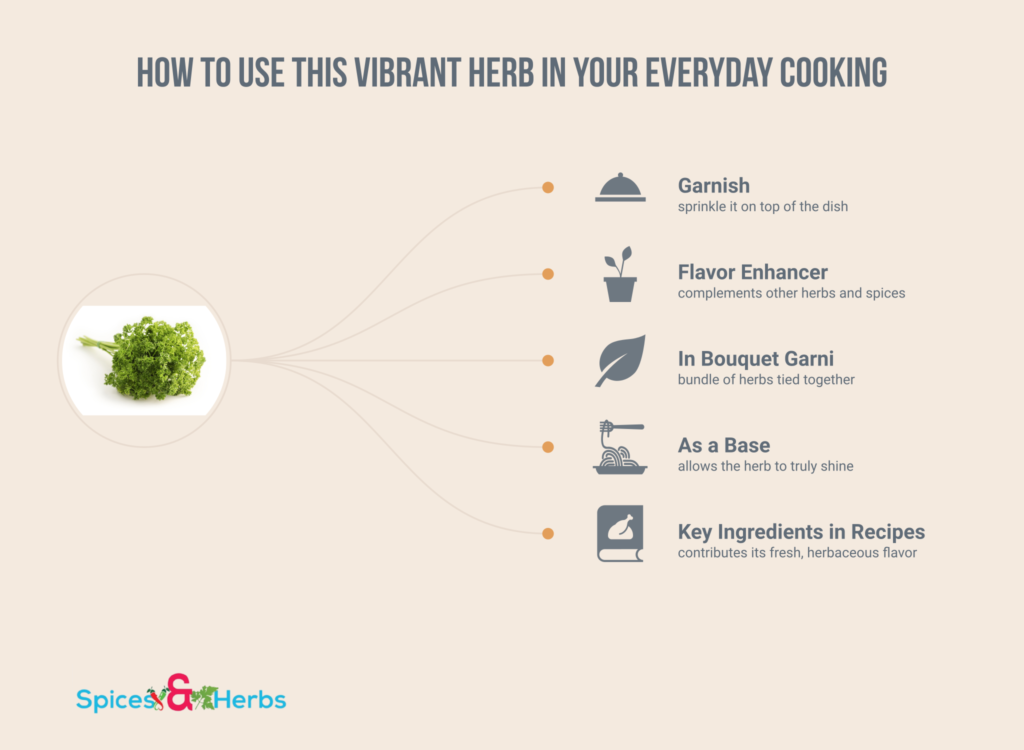
Parsley is one of the most versatile herbs, with its bright flavor and vibrant color adding a delightful touch to almost any dish. Here are some of the top ways you can use it in your cooking:
Garnish
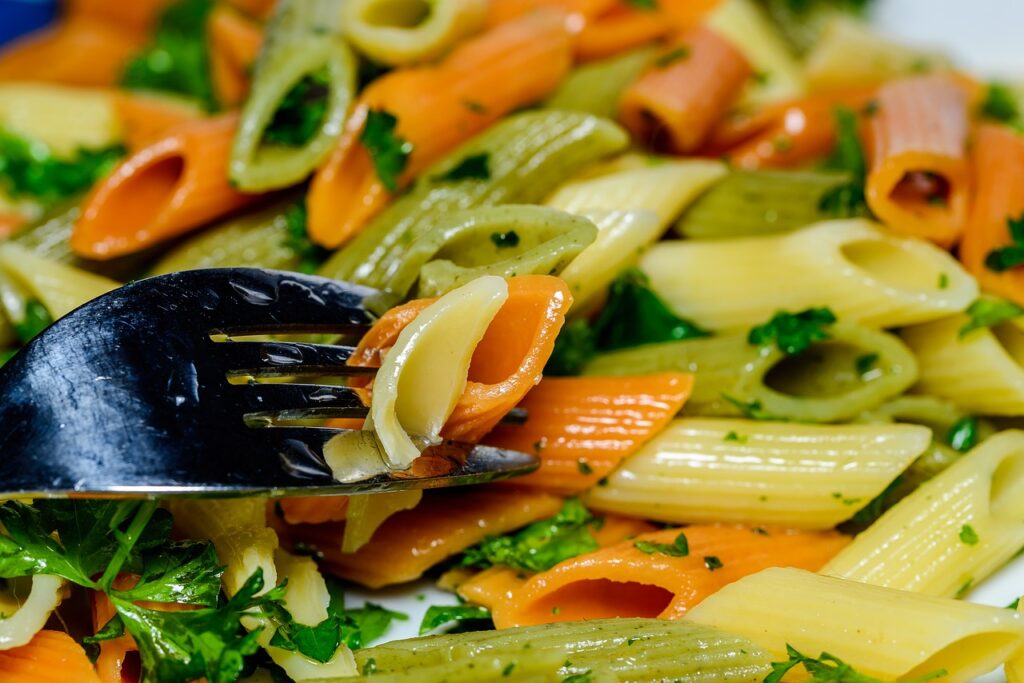
One of the most popular uses for parsley in cooking is as a garnish. It adds a fresh, vibrant touch to various dishes, making them look even more appetizing. You know, we eat with our eyes first, and a little sprinkle of parsley can really make a dish pop!
Parsley makes your dish look pretty and brings a subtle, fresh flavor that complements other ingredients without overpowering them. It’s amazing how a simple sprinkle of chopped parsley can elevate a pasta plate or a soup bowl.
To use parsley as a garnish, just wash it, pat it dry, and then finely chop the leaves. You can either sprinkle it on top of the dish right before serving or place a small sprig alongside the main ingredient. Remember, a little goes a long way when using parsley as a garnish!
Flavor Enhancer
Aside from being an eye-catching garnish, parsley can also act as a fantastic flavor enhancer in various dishes. Its bright, fresh taste uniquely complements other herbs and spices, making it a perfect addition to your cooking.
One of the best things about parsley is its ability to blend well with other flavors. This makes it ideal for use in marinades, dressings, and sauces. For instance, adding some chopped parsley to a lemony marinade can give your chicken or fish an extra layer of flavor that’s just irresistible. Or, if you’re making a salad dressing, a bit of parsley can create a delightful harmony between the tang of vinegar and the richness of olive oil.
Parsley also plays a starring role in several sauces, like chimichurri and salsa verde, where it lends its fresh, herbaceous notes to create a beautifully balanced flavor profile. The magic of parsley is that it can enhance the taste of a dish without overpowering other ingredients, allowing them to shine through as well.
In Bouquet Garni
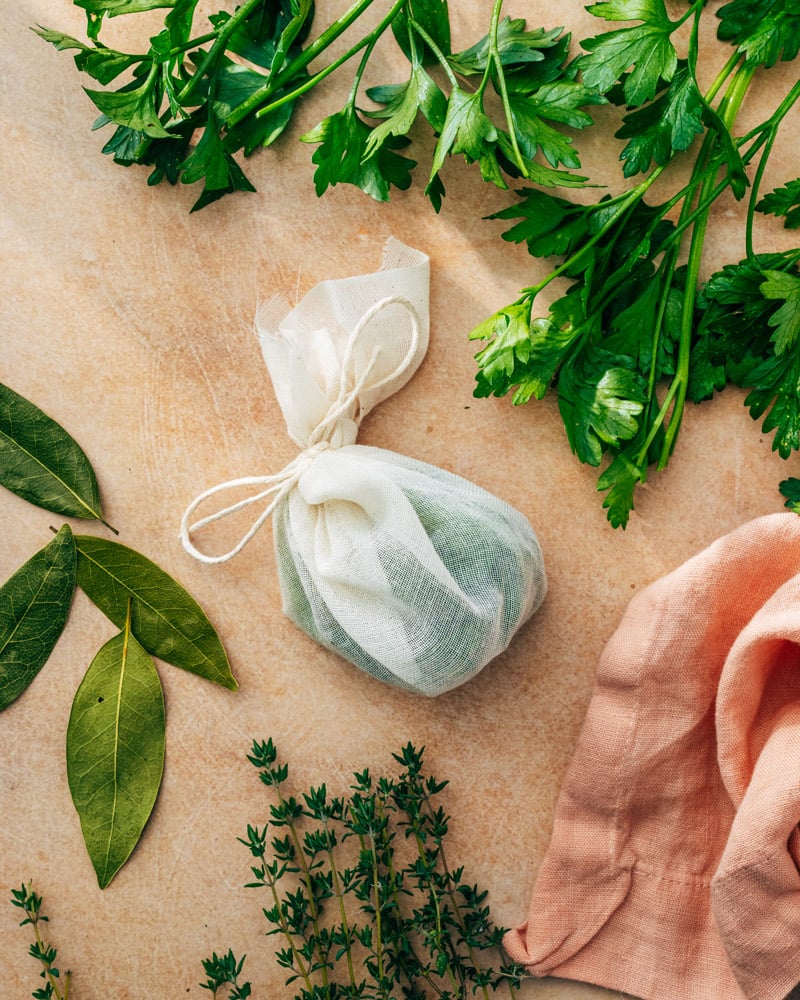
A bouquet garni is essentially a bundle of herbs tied together or wrapped in cheesecloth, which is then added to soups, stews, and sauces to infuse them with flavor. As the dish simmers, the bouquet garni imparts a lovely, subtle aroma that enhances the overall taste without leaving any herb pieces behind.
To make a bouquet garni, you’ll typically use a combination of parsley, thyme, and bay leaves. The parsley adds a fresh, green note that beautifully complements the earthy flavors of thyme and the slightly bitter undertones of bay leaves. Of course, you can always get creative and add other herbs to your bouquet garni, depending on the dish you’re preparing.
To assemble your bouquet garni, simply gather a few sprigs of each herb, tie them together with kitchen twine, or wrap them in a piece of cheesecloth. Then, place the bundle in your pot and let the flavors meld as your dish cooks. Once you’re done cooking, just remove the bouquet garni, and you’re left with a deliciously flavored meal!
As a Base
When we say “as a base,” we mean using parsley as a primary ingredient rather than just a garnish or flavor enhancer. This approach allows the herb to truly shine and imparts a fresh, vibrant taste to your dish.
One great example is tabbouleh, a delicious Middle Eastern salad where parsley takes center stage. This dish combines finely chopped parsley with ingredients like bulgur wheat, tomatoes, onions, and a zesty lemon-olive oil dressing. It creates a refreshing and satisfying meal.
Parsley can also be used as a base in dips and spreads, such as a green herb sauce or parsley pesto. To make a simple parsley pesto, blend together fresh parsley leaves, garlic, Parmesan cheese, pine nuts, olive oil, and a squeeze of lemon juice. This flavorful sauce can be tossed with pasta, spread on sandwiches or crostini, or used as a dip for fresh vegetables.
Key Ingredients in Recipes
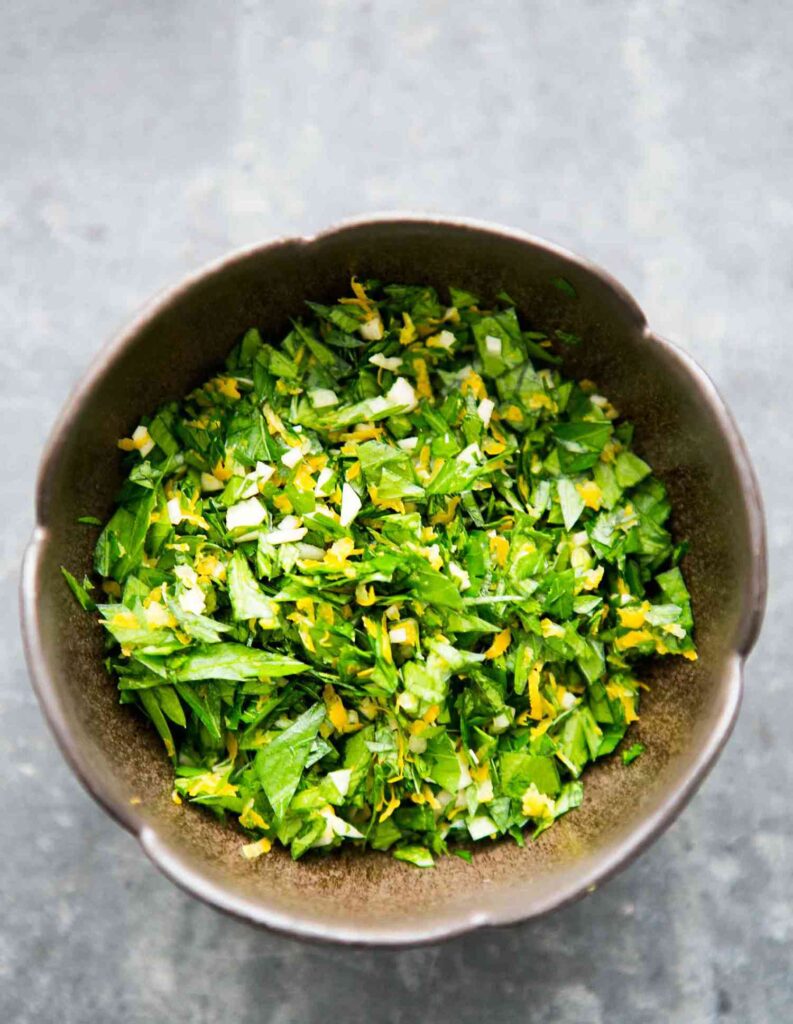
When parsley is used as a key ingredient, it contributes its fresh, herbaceous flavor to the dish. Plus, it often works harmoniously with other ingredients to create a unique and delicious taste. For example, in a traditional Italian gremolata – a mixture of lemon zest, garlic, and parsley – the parsley adds a burst of freshness that balances the bold flavors of the other two components.
Gremolata is often served sprinkled over slow-cooked dishes like osso buco, cutting through the richness and adding a vibrant touch.
Another great example is a popular Middle Eastern dish called falafel. It’s blended with chickpeas, onions, garlic, and spices to create flavorful, deep-fried balls. The parsley not only lends its signature taste to the falafel but also imparts a beautiful green hue to the mixture.
Frequently Asked Questions
Q: Is dried parsley as good as fresh parsley?
A: While dried parsley is convenient and shelf-stable, it tends to lack the vibrant flavor of its fresh counterpart. Opt for freshly chopped parsley whenever possible if you want a more intense taste.
Q: How do I store parsley in the refrigerator?
A: To keep parsley fresh, wrap it tightly in a damp paper towel or place it in an airtight container with a bit of water. Place the wrapped bundle or container in your refrigerator’s crisper drawer for optimal storage.
Q: Does growing parsley from seed take a long time?
A: It can take anywhere from 4 to 8 weeks for parsley seeds to germinate, so patience is key. Once the plants have grown to about 4 inches tall, they should be ready for harvesting.
Q: What spices can I use when making parsley sauce?
A: Parsley sauce is incredibly versatile and can be customized to suit your taste. Common spices used in this dish include garlic, onion powder, oregano, thyme, cumin, and black pepper. Feel free to experiment with different combinations of these herbs and spices for a unique flavor!
Q: What other fresh herb can I use in place of parsley?
A: Parsley is a versatile ingredient that goes well with many other herbs. Some good substitutions include cilantro, basil, oregano, thyme, sage, and dill. Experiment to find out which herbs work best for your dish!
Final Words
Parsley isn’t just a garnish on your plate – it’s a versatile herb that adds flavor and nutrition to your cooking. From soups and salads to sauces and meats, parsley can be used in so many dishes to give them that extra kick. And did you know that parsley is high in vitamins and antioxidants? It’s a great way to boost your immune system and support your overall health. So next time you’re in the kitchen, don’t forget about this amazing herb. Give parsley a chance to shine, and you won’t be disappointed!

